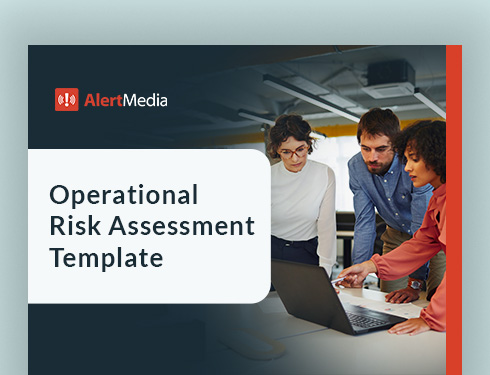
Insider Threat Prevention and Management From Risk to Resolution
Insider threats evolve with the times. Stay ahead of risk with a comprehensive insider threat prevention and management strategy.

Insider threats to your organization change with the times. Take remote work, which started with the internet age and surged after businesses had to rethink the traditional office due to COVID-19. Twenty years ago, the risk of accidentally hiring a North Korean operative who would steal sensitive data and attempt extortion seemed far-fetched. Yet, in a recent case highlighting remote work risks, a company did just that. They unknowingly hired a remote IT worker who falsified his identity. Over four months, he gained privileged access to internal systems, stole company data, and—after being fired—demanded a six-figure ransom to keep it private.
This case shows how insider attacks have changed in modern workplaces, making insider threat management more crucial than ever. Your insider threat prevention program must constantly adapt to keep up with emerging risks—especially from individuals who already have authorized access to sensitive company systems, assets, and operations.
Download Our Operational Risk Assessment Template
Insider Threat Prevention vs. Management
Every action carries risk—even inaction can leave your organization vulnerable. That’s why both proactive prevention and reactive management are essential for handling insider threats. Prevention takes a proactive approach, aiming to stop threats before they happen. Examples include background checks, strict access management, and security policies limiting exposure to sensitive data, reducing the chances of data exfiltration or data leaks.
However, not all risks can be prevented. Management is reactive, focusing on minimizing damage when insider threats do occur.
| Insider threat prevention | Insider threat management |
|
|
Insider Risk Management Recap
In a previous blog post on insider threat assessments, we covered the basics of an evaluation and its benefits for your organization. To summarize that information:
An insider threat is a security risk from within an organization—employees, vendors, or other authorized users who misuse their access to systems, data, or assets. Insider attacks can be:
- Malicious: Intentional actions like data theft, fraud, or sabotage for financial gain or revenge.
- Unintentional: Mistakes, negligence, or security lapses that can expose data, disrupt operations, or create security vulnerabilities.
Why conduct an insider threat assessment?
An insider threat assessment uncovers security gaps before they escalate. By reviewing behavior, access, and policies, you can detect and prevent risks early.
Benefits include:
- Protection of intellectual property and trade secrets.
- Reduction of financial loss from fraud, data breaches, and legal penalties.
- Ensuring compliance with industry regulations and data security policies.
- Enhanced workplace security by fostering a culture of awareness and trust.
Building a Strong Insider Threat Prevention Program
Insider threat prevention is about taking a proactive approach. Working with employees and vendors carries inherent risk since you can’t control every action, yet they require access to sensitive assets, equipment, information, and systems. By recognizing these risks, you can take steps to reduce them through training, access controls, monitoring, and secure onboarding and offboarding processes.
Employee training and awareness
Insider threats aren’t always intentional or malicious. Nearly half of the insider threat incidents reported in one CrowdStrike study stemmed from unintentional acts, such as misconfigurations, falling for phishing attacks, or mishandling sensitive data. While malicious insider threats pose a serious risk, organizations must also address accidental threats through better security awareness.
On The Employee Safety Podcast, Kurt McKenzie, a former FBI supervisory special agent who now leads physical security for a major global tech organization, shared key strategies for improving insider threat training. Drawing from his extensive law enforcement background, McKenzie recommended companies:
- Make insider threat training a cross-departmental effort. Insider threat management isn’t just the responsibility of security teams. McKenzie stresses the need to involve IT, legal, HR, and physical security teams in training programs.
- Reinforce security awareness through repetition. McKenzie highlights the importance of consistent messaging to build awareness. To ensure the information sticks, employees should hear the same security principles through multiple channels—emails, Slack messages, and in-person training sessions.
- Emphasize employee buy-in and engagement. Training shouldn’t just be a checklist; it must resonate with employees. McKenzie recommends providing real-world examples of insider threats, both accidental and intentional, to demonstrate their tangible impact on businesses.
- Use external threat intelligence networks. Insider threat training should not happen in isolation. McKenzie notes that security professionals frequently exchange insights through informal networks, whether they are law enforcement contacts or industry security groups.
Practical insider threat training empowers employees to be the first line of defense. Regular tabletop exercises and security awareness programs help staff recognize and respond to suspicious behavior in real-world scenarios. These exercises simulate potential insider threat incidents, allowing teams to practice detection, escalation, and response in a controlled setting. Organizations can reduce accidental and malicious intent threats by reinforcing security awareness through hands-on training, consistent messaging, and a culture of accountability.
Access control and privilege management
One fundamental principle in security is the principle of least privilege. This means granting individuals only the access necessary to perform their specific tasks and nothing more. While providing broad privileges for certain roles might seem convenient, this approach can quickly lead to security vulnerabilities.
A notorious example of what can go wrong is the 2020 Twitter account hijacking incident. Attackers gained access to Twitter’s internal tools by exploiting the fact that many employees had administrative privileges far beyond what was necessary for their roles. With this excessive access, the hackers could take over high-profile accounts, including those of Elon Musk, Jeff Bezos, Barack Obama, Bill Gates, Apple, and Uber. They then used these accounts to launch a Bitcoin scam, tricking followers into sending cryptocurrency under the false promise of doubling their money.
The principle of least privilege helps prevent incidents like the above by ensuring users have only the access necessary to perform their jobs, nothing more. Implementing this principle consistently across an organization is possible through role-based access control (RBAC).
RBAC is a security framework that restricts system access based on predefined roles within an organization. It enforces the principle of least privilege using the components below:
- Role assignment — Users are assigned specific roles based on their job responsibilities. Each role has predefined access permissions.
- Permission control — Instead of granting privileges to individual users, permissions are assigned to roles, reducing the risk of excessive access.
- Separation of duties — Sensitive tasks are divided among multiple roles to prevent a single user from having unchecked control over critical systems.
- Scalability and consistency — As employees change roles or leave the company, leaders can modify access efficiently without manually adjusting individual permissions.
- Auditability and compliance — RBAC simplifies tracking and auditing access controls, helping organizations meet regulatory and security compliance requirements.
Over time, employees change roles, projects evolve, and systems are updated—excessive or unnecessary permissions can accumulate without routine audits, increasing security risks. Conducting periodic access reviews, removing unnecessary privileges, and enforcing least privilege policies ensures that only the right people have access to critical systems.
Behavioral monitoring and anomaly detection
While no two insider threats are the same, they share some patterns and commonalities. Consider two scenarios.
In the first, a disgruntled employee with access to sensitive financial records decides to leak company data after being passed over for a promotion. Using their privileged access, they quietly download confidential reports and share them with a competitor, hoping to damage the company’s reputation.
In another case, a vendor with ongoing access to internal systems feels slighted after a contract dispute. Seeking financial gain, they exploit their access to exfiltrate client data and sell it to cyber criminals on the dark web.
However, there are some insider threat indicators they may share ahead of the incident, such as:
- Disregarding security policies, such as failing to use a VPN or mishandling credentials
- Logging in at odd hours without an apparent business reason
- Accessing or attempting to access sensitive information outside of regular job duties
- Expressing dissatisfaction, resentment, or hostility toward the company, leadership, or colleagues
- Increased interaction with external entities without an apparent business reason
These and other behaviors are early warning signs of an insider threat and should be consistently monitored. Of course, keeping track of thousands of employees and vendors isn’t a manual process. Many companies are turning to AI-driven programs that analyze threat markers like these and detect patterns in real time.
User and entity behavior analytics (UEBA) can identify early warning signs by continuously analyzing patterns in user activity and detecting deviations that could indicate a potential threat. Unlike traditional security measures that rely on predefined rules, UEBA uses machine learning and statistical analysis to establish baselines of normal behavior for employees, vendors, and other entities within an organization.
When individuals exhibit actions that significantly diverge from their usual patterns, such as accessing files at odd hours, transferring unusually large amounts of data, or repeatedly failing authentication attempts, UEBA flags these anomalies for further investigation.
Secure onboarding and offboarding processes
Onboarding and offboarding processes are your first and last defense against insider threats. Granting the right level of access from day one ensures employees and vendors only have the permissions they need—nothing more. Just as crucial, swift, and thorough de-provisioning at offboarding prevents former employees from retaining legitimate access to sensitive systems.
Structured exit interviews add another layer of protection, helping identify potential risks before they escalate. Employees leaving on bad terms may pose a heightened security threat, making it essential to assess concerns and note any red flags for further monitoring. Organizations can close gaps that might otherwise be exploited by treating onboarding and offboarding as security-critical processes.
Onboarding and offboarding critical tasks | |
Onboarding | Offboarding |
|
|
Insider Threat Management Best Practices for Response and Mitigation
With your proactive insider threat prevention program in place, it’s now time to move on to the management phase of your threat mitigation strategy. This includes developing an incident response plan, continuously monitoring for anomalies, establishing formal investigative protocols, and maintaining clear communication throughout the process.
Emergency or incident response planning
When the worst happens, how will your team respond? Your emergency response plan lays out the actions they will take in the heat of the moment. It’s also called an incident response plan, especially when the threat involves a cybersecurity incident. Still, the goal is the same: Deal with the attack itself and the immediate aftermath in a way that minimizes damage to the company and allows continued operations.
An insider threat incident response plan is your framework for that strategy. It will allow your team to execute the tasks needed to keep your business running. For example, in an insider threat incident involving an employee maliciously deleting a large volume of critical files, your team must act quickly to contain the damage. Containment may include revoking the employee’s access, restoring lost data from backups, and conducting a forensic investigation to assess the full scope of the breach.
Incident response is just one piece of the puzzle. A strong security strategy starts with detailed risk identification to understand threats before they become full-blown crises. That’s why conducting a risk assessment is essential. It helps identify potential vulnerabilities so safeguards can be put in place before an incident occurs.
Continuous monitoring and auditing
In the section on insider threat prevention, we discussed the importance of user behavior analytics in preventing system attacks. However, this is also a key step in threat management, as the significant attack or incident is often just one in a long series of minor breaches or rule violations.
Regularly auditing user behavior and access logs is critical for identifying these warning signs early and addressing potential risks before they escalate. However, with vast amounts of data generated daily, manual monitoring is inefficient and prone to oversight. This is where security information and event management (SIEM) solutions come into play.
SIEM tools aggregate, analyze, and correlate security data across an organization’s network, making it easier to detect anomalies, flag suspicious behavior, and respond to threats in real time. Integrating SIEM into your security strategy gives you greater visibility into potential insider threats, helping stakeholders make informed decisions and act before serious damage occurs.
Investigative protocols
Every insider threat requires a detailed investigation to get to the root of the problem. In malicious cases, these investigations may be more evident and straightforward. For example, in one of the types of insider threats we discussed earlier, an employee’s deletion of a large number of files triggered an immediate response, making it easy to trace the breach back to its source and implement data loss prevention measures.
However, not all insider threats are so clear-cut. In a negligent incident, the breach may go unnoticed for months after the initial event. A classic example is social engineering, such as phishing emails. An employee receives a phishing email that directs them to a fake login page, where they unknowingly enter their credentials. Suppose the cybercriminals behind the attack don’t act immediately. In that case, the breach may not be detected until those compromised credentials are used to access sensitive systems long after the initial phishing attempt.
In such cases, thorough investigations are critical to understanding the full scope of the breach, identifying what security incidents occurred, and determining how to prevent similar incidents in the future. The investigative process should follow a predictable, repeatable series of steps that can be applied in every insider threat scenario to strengthen the organization’s security posture.
Communication and transparency
Communication and transparency are critical in every risk management plan, and your response to insider threats is no different. Clear communication is even more vital after an insider threat incident, as employees may be uncertain or fearful about the consequences. They may also have personal relationships with the parties involved, making their work environment uncomfortable. Transparency helps to ease these concerns.
Communication also plays a key role in investigations. Consider a situation where an employee accidentally downloads malware or opens a phishing email. That individual is unlikely to self-report if past responses have been overly punitive or blame-focused. Instead, communication should emphasize improvement rather than punishment, encouraging employees to come forward without fear.
Building a culture of trust within your team ensures that security issues are addressed proactively. It fosters an environment where employees feel comfortable reporting mistakes. When employees are encouraged to speak up, they become active participants in strengthening overall defense.
Integrating Prevention and Management Into Your Security Framework
Insider threat prevention and management must be ongoing and fully integrated into a converged security approach that unifies physical and cybersecurity measures. A one-time policy or annual training won’t stop ever-changing risks. Continuous monitoring, regular risk assessments, and structured response protocols spanning digital and physical security will help identify and mitigate insider threats before they cause damage.
Leadership plays a direct role in reinforcing a security-conscious culture. In a converged security model, clear policies, consistent enforcement, and transparent communication ensure employees and vendors understand security expectations across all risk areas. Insider threat programs often fail without leadership buy-in due to a lack of accountability and engagement, leaving critical gaps in protection.
Prevention, detection, and response must work together to create a strong defense. Prevention measures like access controls and training reduce risk, while behavioral monitoring and security analytics help detect suspicious activity. A structured response plan ensures swift action to contain threats.
Download our Operational Risk Assessment Template to identify gaps and strengthen your insider threat strategy.





